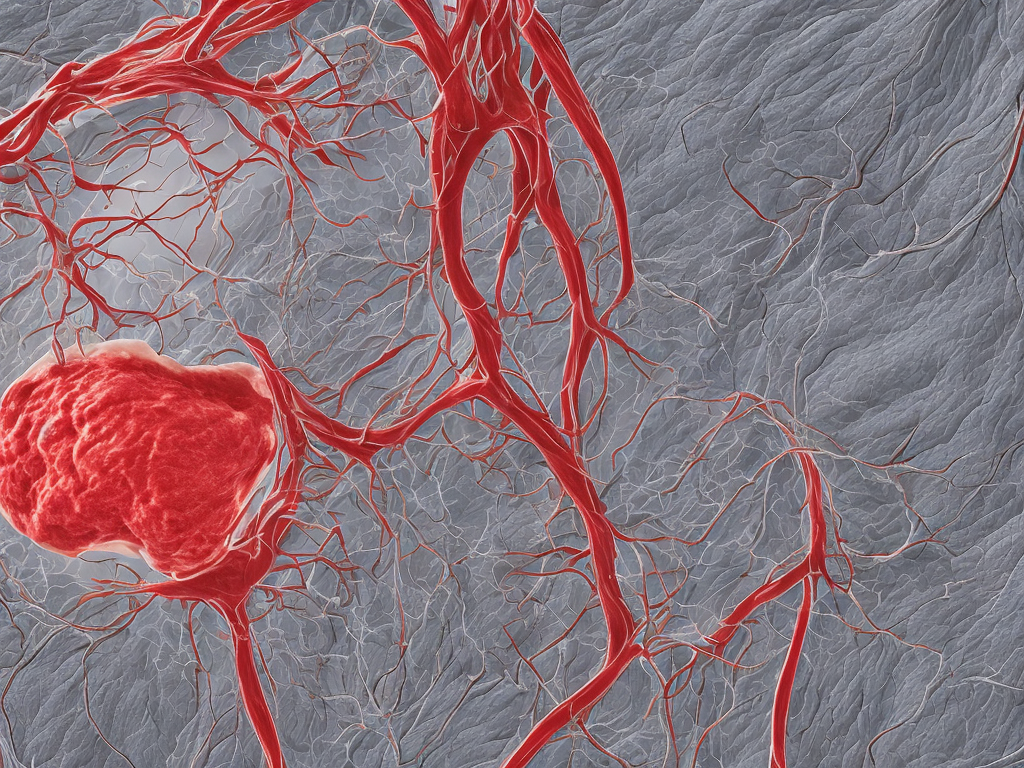
The human body is a complex and intricate structure composed of different tissues and organs that work together to perform various functions. Among these are the circulatory system's arteries and veins, which play a critical role in transporting oxygenated blood, nutrients, and other essential compounds throughout the body. Despite their similarities in function, the differences between arteries and veins are notable.
Arteries are muscular tubes that carry oxygenated blood away from the heart and towards the body's tissues and organs. They have thick and elastic walls that enable them to withstand the high blood pressure generated by the heart's pumping action. Arteries branch out into smaller arterioles as they move further away from the heart, and eventually, into capillaries where they deliver the oxygen and nutrients to the body's tissues.
Veins, on the other hand, are blood vessels that transport deoxygenated blood and waste products back to the heart. They have thinner walls and less muscle tissue than arteries, and are often located closer to the surface of the skin. Veins contain valves that ensure one-way blood flow back to the heart and prevent blood from flowing backward. As the veins move nearer to the heart, they gradually merge into larger vessels until they reach the heart's vena cava.
One of the most significant differences between arteries and veins is their structure and composition. Arteries have thicker walls compared to veins, and their walls contain more muscle fibers and elastic tissues. These features enable arteries to withstand high blood pressures and maintain their shape, even when the heart contracts. In contrast, veins have thinner walls, and their walls contain less muscle and elastic tissue. This makes them less able to maintain their shape and withstand fluctuations in blood pressure.
Another difference is the color of their blood. Arterial blood is bright red, while venous blood is a darker red color. This difference in color results from the oxygenation state of the blood. Oxygenated blood is bright red, while deoxygenated blood has a darker color due to the absence of oxygen.
Meaning of oxygen has a significant role in their function. Arteries carry oxygen-rich blood from the heart to the body's tissues, while veins transport oxygen-depleted blood back to the lungs for oxygenation. Arteries have a high oxygen concentration and a low carbon dioxide concentration, while veins have lower oxygen and higher carbon dioxide concentrations.
The location and distribution of arteries and veins in the body are also different. Arteries are typically located deeper within the body, surrounded by muscle tissue or bones. For instance, the aorta, the main artery that carries blood from the heart to the rest of the body, is located deep within the chest and abdomen. In contrast, veins are situated closer to the skin's surface and are typically more accessible. This is why doctors and nurses often use superficial veins for blood draws and intravenous injections.
Moreover, their shapes are also somewhat different. Arteries have a circular shape and are more rigid and straight compared to veins. Veins have a more irregular shape and are more flexible than arteries. Their flexibility allows them to stretch and expand when blood flows through them, which helps to prevent damage or bursting.
Another difference is the size of their lumen. Lumen refers to the space within a blood vessel where blood flows. The lumen of arteries is small compared to veins, to maintain high blood pressure and keep blood flowing quickly. Whereas in veins, the lumen is bigger to allow easy flow of blood in relatively low pressure.
Lastly, thrombus formation shows a significant variation. Arteries have a higher tendency for thrombus formation, which is the process through which a blood clot forms within the vessel. This is because of the high blood pressure and turbulence within the vessel. If an artery is blocked, it can result in serious medical conditions such as a heart attack or stroke.
In conclusion, while arteries and veins are part of the same circulatory system and share similar functions, there are significant differences in their structure, composition, function, and location. Arteries carry oxygenated blood away from the heart to the body's tissues, while veins transport deoxygenated blood and waste products back to the heart. Arteries have thick walls more muscle, while veins have thinner walls and more valves and they are situated closer to the skin's surface. They also have a smaller/larger diameter or the space through which blood flows. Understanding these differences can help medical professionals diagnose and treat various cardiovascular diseases effectively.
 Self-Instruct
Self-Instruct